Rafail Ismayilov
Localization in Dynamic Indoor MIMO-OFDM Wireless Systems using Domain Adaptation
Aug 27, 2024Abstract:We propose a method for predicting the location of user equipment (UE) using wireless fingerprints in dynamic indoor non-line-of-sight (NLoS) environments. In particular, our method copes with the challenges posed by the drift, birth, and death of scattering clusters resulting from dynamic changes in the wireless environment. Prominent examples of such dynamic wireless environments include factory floors or offices, where the geometry of the environment undergoes changes over time. These changes affect the distribution of wireless fingerprints, demonstrating some similarity between the distributions before and after the change. Consequently, the performance of a location estimator initially designed for a specific environment may degrade significantly when applied after changes have occurred in that environment. To address this limitation, we propose a domain adaptation framework that utilizes neural networks to align the distributions of wireless fingerprints collected both before and after environmental changes. By aligning these distributions, we design an estimator capable of predicting UE locations from their wireless fingerprints in the new environment. Experiments validate the effectiveness of the proposed methods in localizing UEs in dynamic wireless environments.
Towards an AI-enabled Connected Industry: AGV Communication and Sensor Measurement Datasets
Jan 10, 2023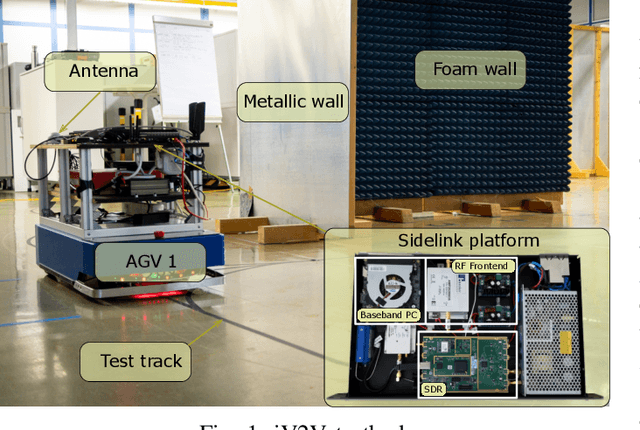
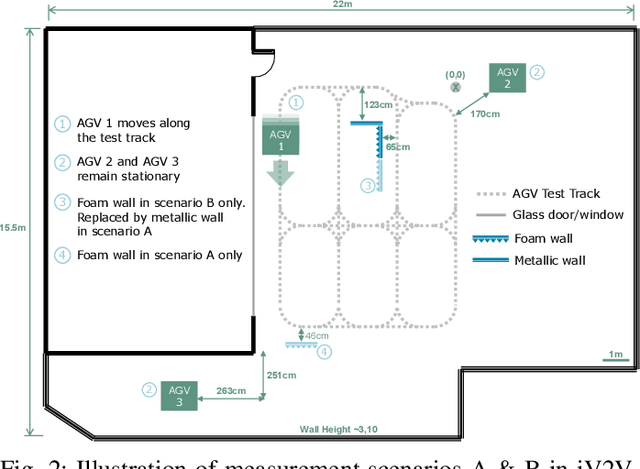
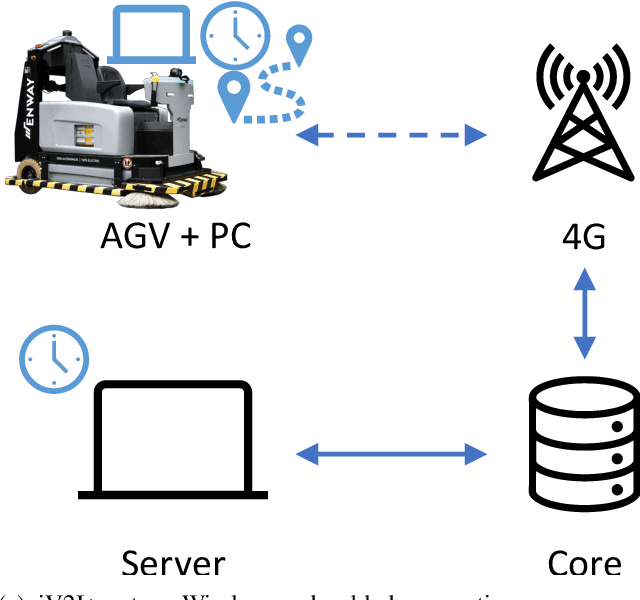
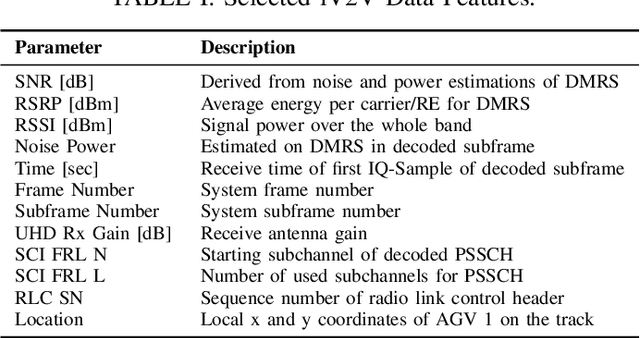
Abstract:This paper presents two wireless measurement campaigns in industrial testbeds: industrial Vehicle-to-vehicle (iV2V) and industrial Vehicle-to-infrastructure plus Sensor (iV2I+). Detailed information about the two captured datasets is provided as well. iV2V covers sidelink communication scenarios between Automated Guided Vehicles (AGVs), while iV2I+ is conducted at an industrial setting where an autonomous cleaning robot is connected to a private cellular network. The combination of different communication technologies, together with a common measurement methodology, provides insights that can be exploited by Machine Learning (ML) for tasks such as fingerprinting, line-of-sight detection, prediction of quality of service or link selection. Moreover, the datasets are labelled and pre-filtered for fast on-boarding and applicability. The corresponding testbeds and measurements are also presented in detail for both datasets.
Deep Learning Beam Optimization in Millimeter-Wave Communication Systems
Jul 16, 2021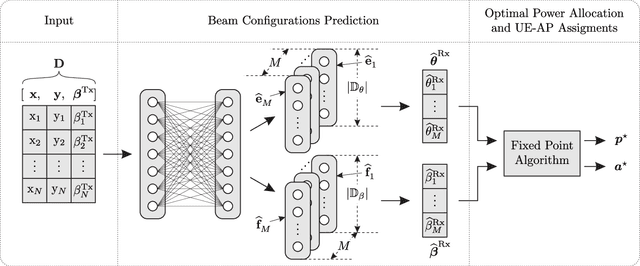


Abstract:We propose a method that combines fixed point algorithms with a neural network to optimize jointly discrete and continuous variables in millimeter-wave communication systems, so that the users' rates are allocated fairly in a well-defined sense. In more detail, the discrete variables include user-access point assignments and the beam configurations, while the continuous variables refer to the power allocation. The beam configuration is predicted from user-related information using a neural network. Given the predicted beam configuration, a fixed point algorithm allocates power and assigns users to access points so that the users achieve the maximum fraction of their interference-free rates. The proposed method predicts the beam configuration in a "one-shot" manner, which significantly reduces the complexity of the beam search procedure. Moreover, even if the predicted beam configurations are not optimal, the fixed point algorithm still provides the optimal power allocation and user-access point assignments for the given beam configuration.
Deep Learning Based Hybrid Precoding in Dual-Band Communication Systems
Jul 16, 2021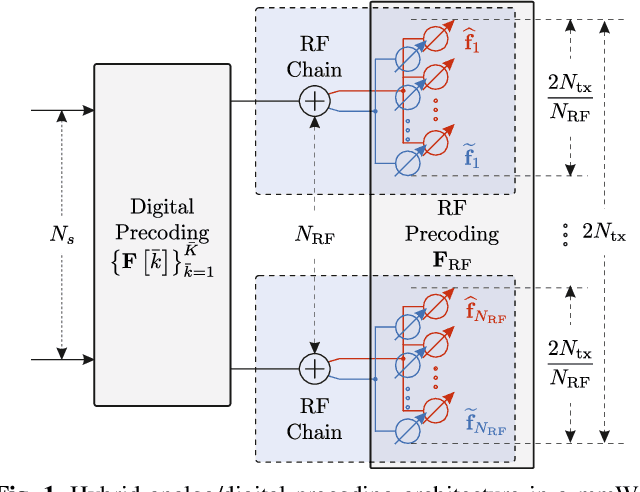

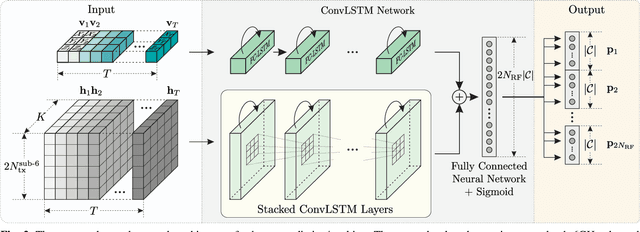
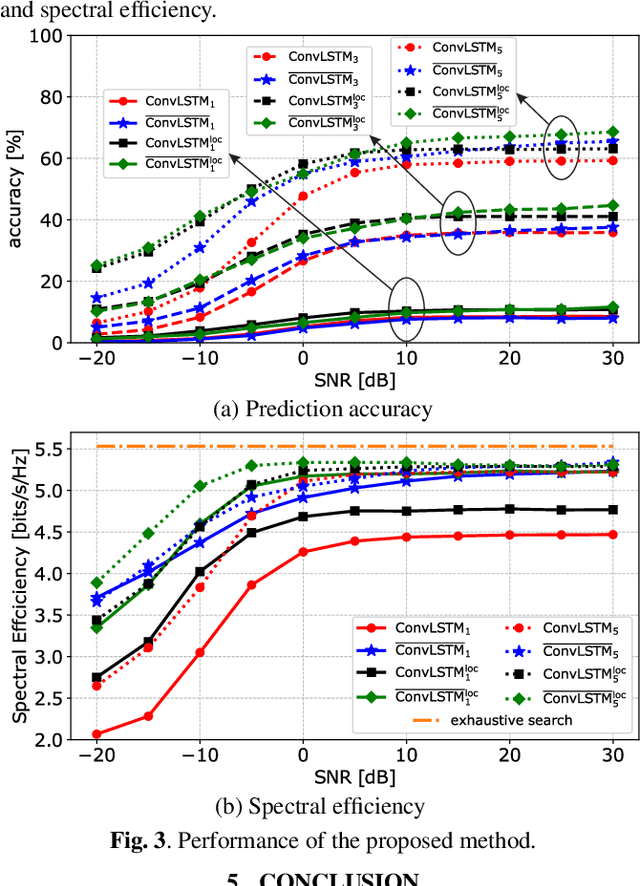
Abstract:We propose a deep learning-based method that uses spatial and temporal information extracted from the sub-6GHz band to predict/track beams in the millimeter-wave (mmWave) band. In more detail, we consider a dual-band communication system operating in both the sub-6GHz and mmWave bands. The objective is to maximize the achievable mutual information in the mmWave band with a hybrid analog/digital architecture where analog precoders (RF precoders) are taken from a finite codebook. Finding a RF precoder using conventional search methods incurs large signalling overhead, and the signalling scales with the number of RF chains and the resolution of the phase shifters. To overcome the issue of large signalling overhead in the mmWave band, the proposed method exploits the spatiotemporal correlation between sub-6GHz and mmWave bands, and it predicts/tracks the RF precoders in the mmWave band from sub-6GHz channel measurements. The proposed method provides a smaller candidate set so that performing a search over that set significantly reduces the signalling overhead compared with conventional search heuristics. Simulations show that the proposed method can provide reasonable achievable rates while significantly reducing the signalling overhead.
 Add to Chrome
Add to Chrome Add to Firefox
Add to Firefox Add to Edge
Add to Edge